CeRDI Newsletter Winter 2025
Streamlining sustainability reporting for land managers
Land managers face ever-increasing numbers of requests to demonstrate that their land is being managed sustainably. These requests can come from many different directions – including government agencies, Catchment Management Authorities, lenders, supply chain partners, and local communities.
Responding to these demands is costly, particularly when all of these stakeholders are asking for information in different ways.
CeRDI is leading a two-year project to help landowners manage these requests more efficiently and cost-effectively, recognising that often, a significant amount of time and effort can be saved by repurposing existing data. The project will run until the end of 2026.
-
CeRDI has partnered with the Food Agility CRC, Corangamite Catchment Management Authority, Precision Ag and Southern Farming Systems. The project is developing an innovative environmental data integration platform to streamline data collection, processing and reporting, making it easier for land managers to demonstrate their environmental credentials, with the flexibility to accommodate a wide variety of data inputs and end user needs.
The project is focussing on a section of the Corangamite region within the Leigh River, Native Hut Creek, Bruce Creek and Moorabool River catchments. It will produce a set of natural capital accounts that can be used to demonstrate the value of environmental assets, and a set of reports on individual land managers’ impacts and dependencies on nature. However, the significant value add is infrastructure being developed to enable these reports to be produced generated more efficiently and at scale.
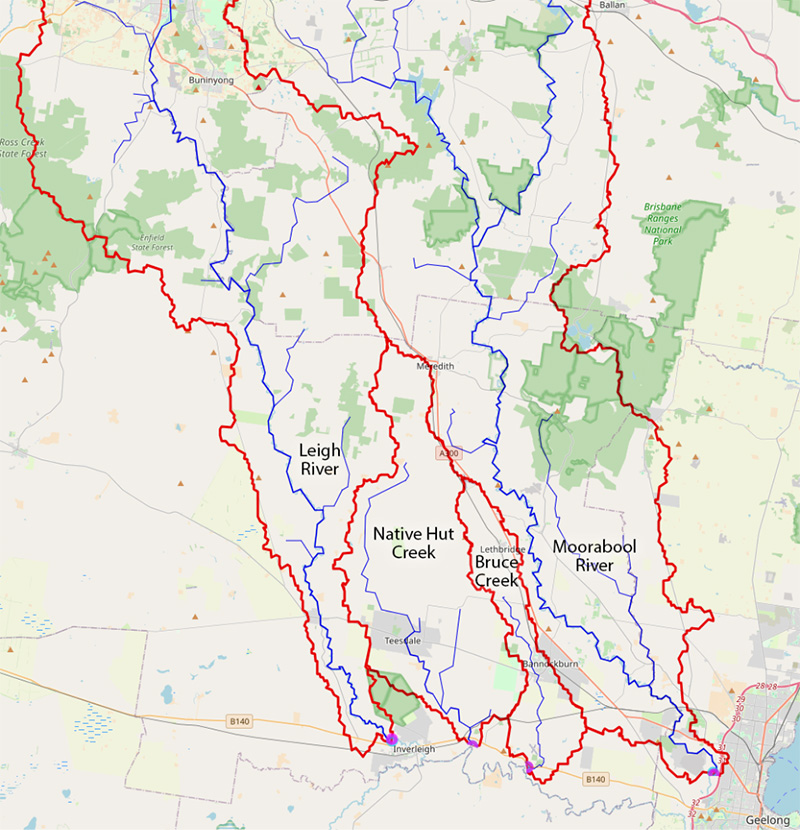 |
|
Corangamite region within the Leigh River, Native Hut Creek, Bruce Creek and Moorabool River catchments
|
One of the early findings from the project has been the need for publicly available ‘crosswalks’ between vegetation classification schemes, which currently vary across regional, state, national and international levels. Without these, it is effectively impossible to compare data on ecosystem extent across jurisdictions. The project is investigating the possibility of publication of crosswalks between regional and Victorian classification schemes, and national and international schemes.
Land managers within the area shown in the above map are invited to contact the project team (at cerdi.admin@federation.edu.au) if they are interested in combining their own data with public data, and/or in viewing and providing feedback on example reports.
Land managers interested in participating in the project can contact cerdi.admin@federation.edu.au at CeRDI.
Funding success: Impact of onshore renewable energy facilities on threatened birds
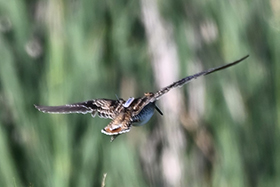 |
|
|
Photo taken by David Cunningham, Canberra.
|
|
| |
|
In June 2025, Federation University joined a successful tender with the Arthur Rylah Institute for Environmental Research (ARI). ARI is leading a program of research aimed at determining and addressing the impacts on wildlife of renewable energy developments, such as wind turbines. In collaboration with species experts, targeted research, that includes fieldwork and stakeholder engagement, will be used to generate and synthesise up-to-date ecological information for seven species listed as threatened under the EPBC Act (1999). The research synthesis will be used to develop regulatory guidance specific to each species.
One of those species is Latham’s Snipe, a migratory shorebird which was recently uplisted to Vulnerable under the EPBC Act - thanks in part to the research of Dr Birgita Hansen, Senior Research Fellow at CeRDI.
-
Dr Hansen will lead the Federation contribution to the project focusing on developing guidance for assessing the impact of renewable energy developments on Latham’s Snipe. Her research will help inform national strategies for mitigation, management, and biodiversity offsets, helping to ensure that the expansion of renewable energy does not come at the expense of vulnerable species. In addition, Dr Hanson will contribute to a second project, led by the ARI, which will develop a decision support tool to assess collision-related fatalities associated with renewable energy infrastructure.
This spring and summer, Dr Hansen will lead an intensive field program across two major Latham’s Snipe populations in Victoria and South-Eastern South Australia. The team will collect vital data on the birds’ movements, flight heights, and speeds-information that will be instrumental in shaping future environmental assessments and conservation efforts.
This collaboration marks a significant step forward in aligning renewable energy expansion with ecological responsibility, and aligns with key strategic research and industry collaboration priorities for Federation University.
The research is funded under the Commonwealth’s Department of Climate Change, Energy, the Environment and Water (DCCEEW) Renewables Environmental Research Initiative (RERI).
New partnership between Federation University and the Tasmanian Land Conservancy on the Latham’s Snipe project
The Tasmanian Land Conservancy (TLC)  is a not-for-profit science and community-based organisation dedicated to acquiring and managing land for conservation purposes. One of its properties, Silver Plains in central Tasmania, supports a significant highland population of Latham’s Snipe.
is a not-for-profit science and community-based organisation dedicated to acquiring and managing land for conservation purposes. One of its properties, Silver Plains in central Tasmania, supports a significant highland population of Latham’s Snipe.
In partnership with the TLC, CeRDI’s Dr Birgita Hansen has established a new research program to investigate the ecology and habitat use of Latham’s Snipe at Silver Plains. This initiative includes an industry-funded Masters project being conducted by Federation University student Saundra Le Clair.
-
The Latham's Snipe research forms part of a larger wetland restoration program, being led by the TLC, which was recently awarded nearly $1m by the Ian Potter Foundation  with Federation University as a key partner.
with Federation University as a key partner.
Further information about the Commonwealth program can be found here on the DCCEEW website  .
.
Visualising Australasia’s Soils: Advancing Australia’s soil knowledge system
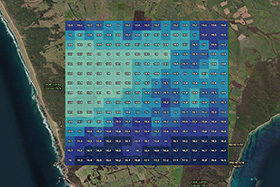 |
|
|
VAS - Radar rainfall demonstrator
|
|
| |
|
The Visualising Australasia’s Soils (VAS) project began in 2019 to provide Soil CRC participants with access to data, information and knowledge on soils across Australia and New Zealand. It led to the development of a dynamic, web-based portal that integrates a wide range of public and private soil datasets for use by the Australian agricultural sector.
Now in its final phase (Phase 3), the project aims to establish the VAS portal as a sustainable, long-term component of Australia’s soil knowledge infrastructure, supporting industry, research and education. The portal now includes:
 Data from over 5,500 sites, comprising 15,000 samples and 250,000 observations collected between 1988 and 2024, as well as 800 million soil probe observations.
Data from over 5,500 sites, comprising 15,000 samples and 250,000 observations collected between 1988 and 2024, as well as 800 million soil probe observations.
 Contributions from project partners continue to grow, enhancing the depth and breadth of available data.
Contributions from project partners continue to grow, enhancing the depth and breadth of available data.
 Public datasets have been updated with metadata, including descriptions, contact details, and licensing information.
Public datasets have been updated with metadata, including descriptions, contact details, and licensing information.
-
Project Leader Associate Professor Peter Dahlhaus said Phase 3 focusses on improving data accessibility, expanding and improving the depth and breadth of available data.
This includes uploading ancillary data - such as soil profile datasheets, photographs, laboratory data sheets and reports - and integrating soil data from Soil CRC projects and participants
To support this, CeRDI appointed two students to assist in mining and mapping legacy data from Federation University research theses and reports to include (as open data) in the VAS aggregator.
The University of Newcastle has also committed to making their soil datasets openly available for the Hunter region. Meanwhile, university researchers are benefiting from moisture and temperature probe data from a participating farming systems group that has been shared via a VAS data sharing agreement. This data will be used to calibrate machine learning models of soil moisture using remotely sensing.
All publicly available datasets on the VAS portal have been updated to include meta data for data descriptions, contact details, and licensing information.
One of the most advanced technical developments in Phase 3 is the integration of a tool that draws on the Bureau of Meteorology’s Rainfields system, which calibrates archival radar rainfall data. This tool, based on research by Dr Peter Weir (supported by a Soil CRC PhD scholarship), significantly enhances the portal’s capabilities:
The integration of this data extends the capabilities for VAS and offers new opportunities for project partners to access weather data, mapped to regions and soil types,
said Associate Professor Dahlhaus.
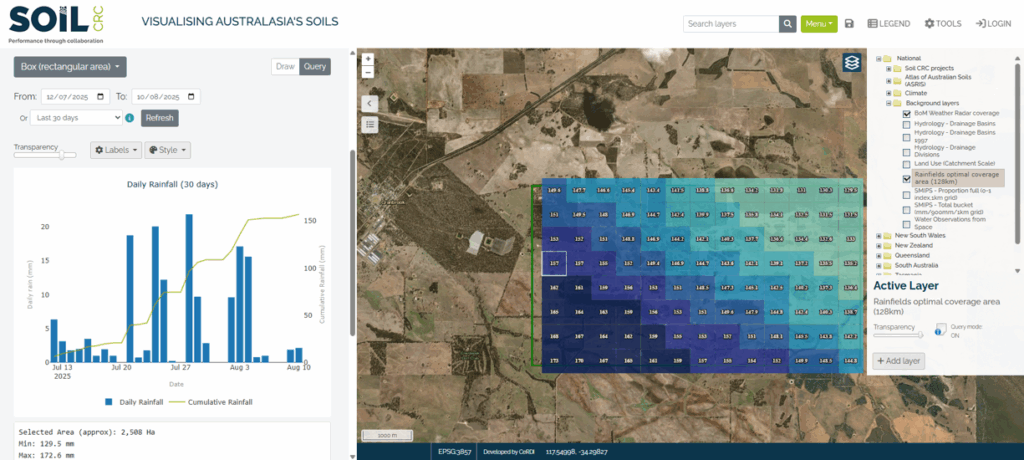 |
|
A screenshot of the summed rainfall from just east of Cranbrook, WA, for the 30 days prior to 10 August 2025. Each cell is 500m by 500m.
|
The project team have also made substantial progress in upgrading the web framework on which the VAS portal has been built.
"This provides a more robust, flexible, and efficient means to add functions and applications to the VAS system, including a metadata catalogue, addition of links to ancillary data, and easier self-serve for adding data sets," Associate Professor Dahlhaus said.
"Phase 3 will also harness artificial intelligence to add value to soil performance data, and enhance the reporting of soil quality, function and target values for high performance soils."
The project team are developing a governance model, including data governance and stewardship guidelines, for managing VAS beyond the life of the Soil CRC.
The final phase is a collaboration between Federation University, the University of Newcastle and a Community of Practice involving Soil CRC participants across Australia, including Burdekin Productivity Services, North Central CMA, Riverine Plains, Southern Farming Systems, Western Australian No Till Farmers Association (WANTFA) and West Midlands Group.
"The primary goal of the Community of Practice is to foster continuous learning and development, enabling our project partners to stay updated with the latest technologies and innovations relating to the portal," Associate Professor Dahlhaus said.
"The Community of Practice will establish and agree on key use-cases, which will be developed and implemented over the coming months to enhance the value of VAS outcomes for all project partners."
Associate Professor Dahlhaus emphasised that this is challenging research that requires an understanding of both the physical and social barriers to data sharing, as well as identifying what motivates data custodians to share their soil data.
"The project involves finding the value proposition for the participants and end-users and managing the technical challenges of making it all work in an intuitive-to-use, seamless and effortless manner," he said.
Research has been conducted using social science methods to examine the perceptions, role and application of VAS by project partners. Led by Dr Alison Ollerenshaw, the project team identified that there is broad agreement in the contribution of VAS, and anticipated expectations for soil data sharing and management using the portal.
However, data custodians remain reluctant to openly share data. The reasons are complex, but generally include:
- Data custodians’ uncertainty about whether they had the right to share soil data
- Farmer groups’ need to retain the trust of their members
- Concern about VAS sharing their data with other federations (in the future)
- Concern that long-term data availability and security may cease with the project
- The difficulty in supplying the required metadata (e.g. who ‘owns’ these data?).
Activities are underway to address these challenges and to build the value proposition for VAS that will enhance its adoption and application by data custodians and industry stakeholders. Ongoing research will also be conducted to explore and extend the insights about VAS from stakeholders and to assess its contribution as a federated soil data knowledge system. The research will provide evidence that will inform and guide future data federations.
The project team explores these challenges and opportunities in more detail in an article published in the Soil Use and Management journal: 'The Opportunities and Challenges Associated With Establishing a National Soil Data Repository From Public and Private Actors  '.
'.
How VAS started
The first phase of the project wrapped up in 2021, delivering an online portal that brings together a large array of reliable soil datasets from government agencies, industry and grower groups, and individual farmers. With the involvement of Landcare Research New Zealand, it covered both Australia and New Zealand.
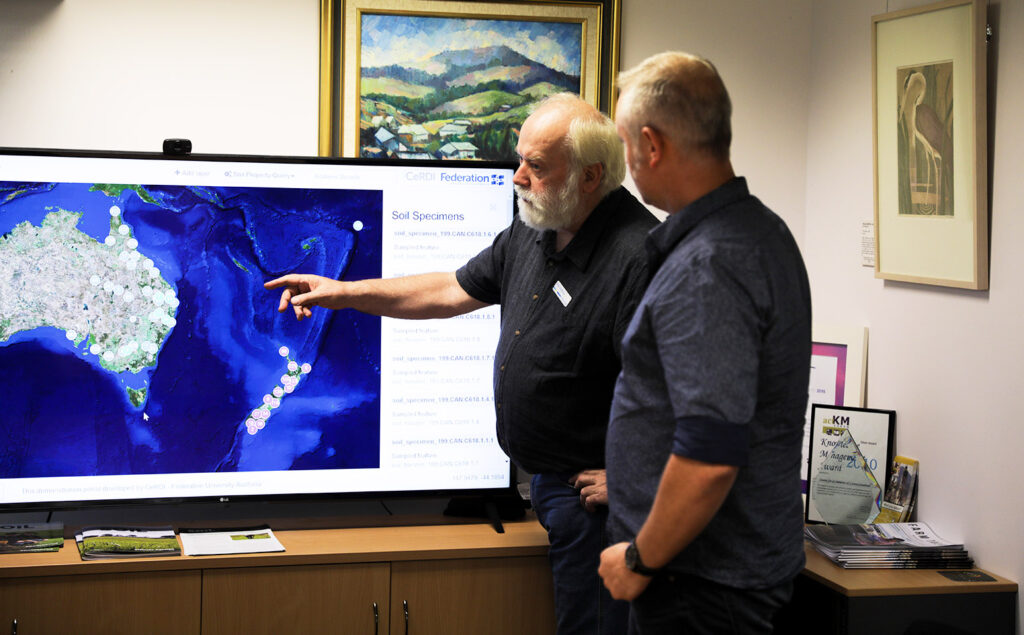 |
|
Associate Professor Peter Dahlhaus demonstrates an earlier version of the VAS soil data portal.
|
Phase 2 (2021-2024) added greater functionality to the VAS portal, including a self-serve data management system, improved filtering and reporting, seamless interoperability with the Australian National Soil Information System (ANSIS)  and the inclusion of soil sensor data.
and the inclusion of soil sensor data.
"Throughout all phases, the key objectives of VAS are to motivate soil data custodians to make their data findable, accessible, interoperable and reusable (FAIR), and align with other national and international soil research data initiatives to maximise discovery and reuse," Associate Professor Dahlhaus said.
Visualising Australasia’s Soils video
A video featuring CeRDI’s Associate Professor Peter Dahlhaus showcases developments, technological innovations, and features of Visualising Australasia’s Soils (VAS).
The video is available on the Soil CRC YouTube site: www.youtube.com/watch?v=1wwJJLiv4Hk 
Soil CRC Participants Conference
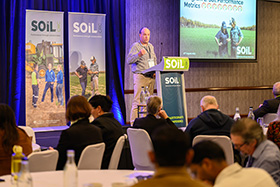 |
|
|
Dr Nathan Robinson - presenting at the Soil
CRC Participants Conference 2025
|
|
| |
|
CeRDI was strongly represented at the recent Soil CRC Participants Conference held in Perth in late August. Distinguished Professor Helen Thompson, Assoc Prof Peter Dahlhaus and Dr Nathan Robinson made the trip to Western Australia to participate in the event. Current and past Federation University PhD students also attended the conference.
Helen attended in her role as a Board Member of the Soil CRC and Nathan attended as Soil CRC leader of the soil performance metrics program. Nathan is also a project leader on two projects for improving soil data management and identifying key soil performance indicators.
The conference provides an opportunity for participants across the 39 partner organisations of the Soil CRC to come together to share program and research updates and enhance collaboration. Hosting the event in Perth provided a valuable opportunity for delegates to understand more about the soils and agriculture of Western Australia (WA) and to interact with our WA colleagues and project partners on their home ground.
-
During the three-day conference, Peter Dahlhaus provided an update to members of the Visualising Australasia’s Soils (VAS) project steering committee outlining plans for building the legacy of VAS. During the session, Pete shared the latest updates on the portal content and website redesign with the inclusion of the Rada Rainfall Demonstrator (vas.soilcrc.com.au/resources-and-user-guides/radar-rainfall-demonstrator  ).
).
| |
 |
| |
Distinguished Professor Helen
Thompson - visiting one of the
Soil CRC field site's
|
| |
|
The Radar Rainfall Demonstrator provides access to weather data mapped to regions and soil types across Australia, providing historical rainfall information for a selected area, and timespan, mapped to 500m resolution. It was developed from the research outcomes of CeRDI’s Dr Peter Weir, who recently completed his PhD, with support from a Soil CRC PhD scholarship. The VAS website also contains dedicated education and training resources which will be further developed and refined over time. Examples include extensive information about the technology and research framework of VAS. These latest updates to the site are accessible visible from the VAS homepage  .
.
During the conference Nathan provided an update and held a workshop about the soil performance metrics program, delivering insights in his capacity as program leader.
Prof Richard Bell, Emeritus Professor at Murdoch University, delivered the keynote address at the conference during which he made special note of the contributions of CeRDI’s Nathan Robinson and Rick Pope in mapping of sandy soils across Australia’s agricultural lands: doi.org/10.25955/24515101.v1 
Federation University Co-Op model
Federation University’s Co-op Model is delivering valuable industry experience for students while providing businesses with new skills and perspectives. Through the program, students undertake 60 days of paid placement, aligned with their academic studies and contributing directly to course credit. The program offers a structured and supportive experience, ensuring students are well-prepared to contribute meaningfully in the workplace.
As part of the program, CeRDI has recently appointed two undergraduate students to work alongside staff in soil data stewardship. These placements are designed to support CeRDI’s research while offering students hands-on experience in digital innovation and environmental data management.
-
Employers participating in the Co-op Model sign an agreement outlining mutual expectations and support, with Federation University facilitating the process—from advertising roles and recruiting students to setting learning objectives and completing final assessments.
Before commencing their placements, students complete a foundational subject on Professional Identity, which equips them with essential workplace skills including self-awareness and professionalism, effective communication and problem-solving, career planning and time management, and teamwork, networking, and understanding workplace culture.
Discipline-specific content tailored to each student’s field of study ensures they’re ready to meet industry expectations upon commencing their placement.
Anthony Dale, a Bachelor of Science student, commenced his placement with CeRDI in August, contributing to the Visualising Australasia’s Soils (VAS) project. Esther Rosenberg will begin her placement in November, also working in soil data stewardship.
Showcasing citizen science contributions to the Latham’s Snipe
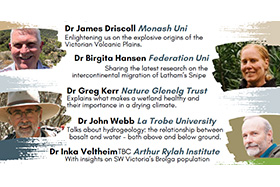 |
|
|
Program for the above forum: Stones, Springs
and Wild Things
|
|
| |
|
Australian citizen scientists - members of the public who are collecting data in collaboration with university researchers - have been making important contributions to the conservation of migratory shorebird species, Latham’s Snipe. Under the leadership of CeRDI’s Dr Birgita Hansen, a national-scale citizen science program is aimed at improving knowledge about the ecology and conservation of the species in Australia.
This Latham’s Snipe Project commenced in 2014 in south-west Victoria with a pilot study to survey snipe in small urban wetlands. Since then, the program has expanded across the species’ eastern Australian range and volunteers conducting site-based monitoring three times a year. Now in its 10th year, the national surveys have engaged over 400 volunteers.
-
Dr Hansen recently provided two community group updates on the project activities and findings. On Wednesday 13th August, she gave an online presentation to the Hunter Bird Observers Club (HBOC)  in Newcastle. HBOC have been active in the project since 2017 and have contributed significant amounts of data toward monitoring the species. HBOC is also collaborating with researchers at the University of Newcastle and through this partnership, the Latham’s Snipe research has broadened its engagement. Among the attendees were representatives of Maitland City Council, who are seeking to establish wetland reserves for snipe.
in Newcastle. HBOC have been active in the project since 2017 and have contributed significant amounts of data toward monitoring the species. HBOC is also collaborating with researchers at the University of Newcastle and through this partnership, the Latham’s Snipe research has broadened its engagement. Among the attendees were representatives of Maitland City Council, who are seeking to establish wetland reserves for snipe.
Dr Hansen also attended the Stones, Springs and Wild Things community forum  on Saturday 16th August where she joined a group of experts to talk about geology, hydrology and biodiversity of the Victorian Volcanic Plains. This forum was organised by co-organised by The Friends of Yatmerone and the Penshurst Volcanoes Discovery Centre and was held at the Penshurst Memorial Hall. Dr Hansen presented on the Latham’s Snipe Project to the Penshurst community which includes a number of volunteers on the project who regularly survey wetlands in and around Penshurst. Among the speakers was Dr James Driscoll who gave a really engaging presentation about volcanos, Dr John Webb who spoke about hydrogeology and Dr Greg Kerr of Nature Glenelg Trust, who spoke about wetland restoration on private land.
on Saturday 16th August where she joined a group of experts to talk about geology, hydrology and biodiversity of the Victorian Volcanic Plains. This forum was organised by co-organised by The Friends of Yatmerone and the Penshurst Volcanoes Discovery Centre and was held at the Penshurst Memorial Hall. Dr Hansen presented on the Latham’s Snipe Project to the Penshurst community which includes a number of volunteers on the project who regularly survey wetlands in and around Penshurst. Among the speakers was Dr James Driscoll who gave a really engaging presentation about volcanos, Dr John Webb who spoke about hydrogeology and Dr Greg Kerr of Nature Glenelg Trust, who spoke about wetland restoration on private land.
AI changing the landscape of academic research data
Artificial Intelligence (AI) is transforming academic research, offering powerful tools to analyse, interpret, and manage vast datasets with unprecedented speed and accuracy. While institutional policies help us navigate the current landscape, it is important to scan the horizon and gain some perspective on what potentially lies ahead for researchers in this space.
Key Impacts of AI in Research:
 Data Analysis and Pattern Recognition: Machine learning algorithms can sift through massive datasets to identify trends, correlations, and anomalies that might be missed by traditional methods.
Data Analysis and Pattern Recognition: Machine learning algorithms can sift through massive datasets to identify trends, correlations, and anomalies that might be missed by traditional methods.
 Natural Language Processing (NLP): NLP tools help researchers extract insights from unstructured text, such as academic papers, survey responses, and historical documents.
Natural Language Processing (NLP): NLP tools help researchers extract insights from unstructured text, such as academic papers, survey responses, and historical documents.
 Predictive Modelling: AI enables the creation of models that can forecast outcomes, simulate scenarios, and support hypothesis testing.
Predictive Modelling: AI enables the creation of models that can forecast outcomes, simulate scenarios, and support hypothesis testing.
 Research Efficiency: Automated tools streamline tasks like data cleaning, coding, and visualisation, freeing up time for deeper inquiry and innovation.
Research Efficiency: Automated tools streamline tasks like data cleaning, coding, and visualisation, freeing up time for deeper inquiry and innovation.
-
While AI offers immense potential, researchers must navigate challenges such as data privacy, algorithmic bias, and the need for transparent methodologies. Ethical use and interdisciplinary collaboration are key to harnessing AI responsibly. As AI continues to evolve, its integration into academic research promises to accelerate discovery, foster innovation, and democratise access to knowledge. Research institutions will need to invest in AI literacy and infrastructure to keep step with the changing landscape. As researchers, it is imperative to be aware of institutional policies and procedures about AI and to join communities of practice, think tanks and conversations to ensure we are using AI responsibly, but also to its fullest advantage.
This story was prepared by Jude Channon, PhD candidate at Federation University. Jude has project management roles at both CeRDI and the Australian Research Data Commons (ARDC) and contributes to a range of projects in the digital health and health data spaces.
Moth Tracker
Bogong Moths are an important and iconic species. After Bogong Moth numbers crashed by an estimated 99.5% in 2017-18, these small but mighty moths were sadly listed as Endangered by the IUCN in 2021. Bogong Moths are found in every Australian state and territory except for the Northern Territory. They are even sometimes found in Aotearoa New Zealand! Beginning in spring each year, Bogong Moths make an epic migration towards alpine regions in Victoria and New South Wales, where Critically Endangered Mountain Pygmy-possums are waking from their hibernation. Bogong Moths are a crucial spring food source for Mountain Pygmy-possums and declines in Bogong Moth numbers are an urgent threat to the possums’ survival.
-
Moth Tracker is a citizen science initiative which aims to gather data on the Bogong Moth’s annual migration. Submitting a moth sighting on the Moth Tracker website is quick and easy. We don’t collect the contact details of people submitting Moth Tracker sightings, only their name. We would be very grateful to see your audience involved and helping to change the future of Bogong Moths and Mountain Pygmy-possums.
Moth Tracker represents an important collaboration between Zoos Victoria and researchers at CeRDI. The collaboration commenced in 2019 with the launch of the citizen science platform to support research and conservation efforts. Collaborative efforts have continued between the two organisations since then.
This year’s campaigned commenced on 1 September through until the end of December 2025. This is an annual campaign during the Bogong Moth’s spring migration, however, Bogong Moths also make an equally impressive return migration in autumn, and the Moth Tracker website is active for sighting submissions year-round.
For further information:
Zoos Victoria’s Moth Tracker webpage: zoo.org.au/moth-tracker 
Moth Tracker webpage, where citizen scientists log moth sightings: mothtracker.swifft.net.au/ 
Staff Profile: Anthony Dale, Soil Data Stewardship
 |
|
|
Anthony Dale
|
|
| |
|
Anthony joined CeRDI in 2025 in the part time role of Soil Data Stewardship. Anthony is currently undergoing a Bachelor of Science at Federation University, Majoring in Geoscience. He has experience working with Mining and Minerals exploration companies around Western Victoria. Anthony is looking to build strong data management, research, teamwork and GIS skills while working at CeRDI as placement for his course. Eventually, Anthony hopes to transition his Geo-data skills into a career in resource definition and minerals Exploration.
At CeRDI, Anthony is supporting researchers to create high quality datasets, organising and conducting analysis of relevant research information, input and maintenance of research data, and to participate in the delivery of key aspects of research projects.
HDR profile: Saundra LeClair, Masters by Research
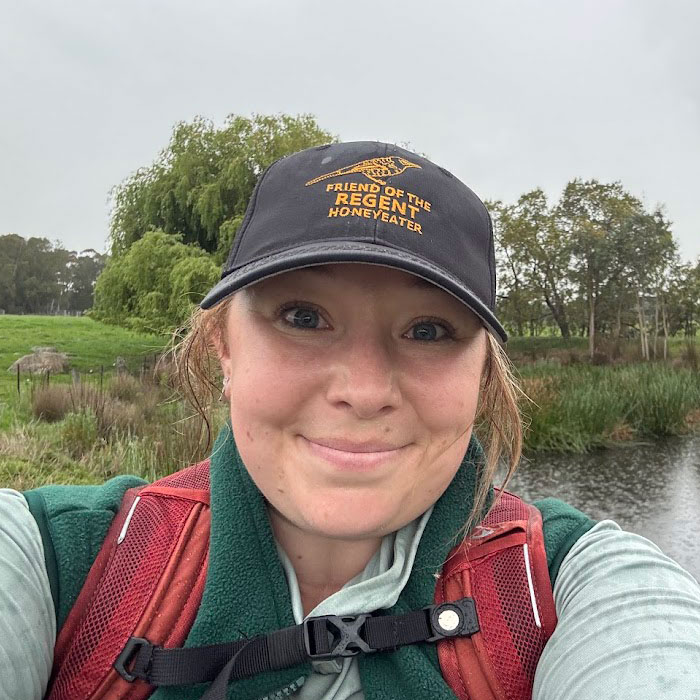 |
|
|
Saundra LeClair
|
|
| |
|
Saundra recently commenced a Master’s by Research at Federation University and will undertake research on the ecology of Latham’s Snipe (Gallinago hardwickii) in the central plains of Tasmania. Latham’s Snipe is a cryptic migratory shorebird that breeds in Japan and migrates to Australia to spend the non-breeding season in wetlands. Despite being widespread, its ecology is poorly understood, and much of its habitat is under pressure from agricultural land use, drainage, and development.
In the decade prior to commencing her master’s degree, Saundra has been working in bird ecology, citizen science, and habitat management across Canada and Australia. Saundra has held diverse roles, including as a Species at Risk Technician and Farmland Birds Coordinator in Canada, and more recently as the Bitterns on Farms Project Coordinator with BirdLife Australia. Much of Saundra’s work has centred on engaging farmers, landholders, and volunteers in monitoring programs, using citizen science platforms such as Birdata to generate data that informs conservation outcomes. Prior to this, Saundra received a Diploma in Wildlife Conservation Technology in Canada, followed by a Bachelor of Science in Environmental and Natural Resources, completing an honours project on biodiversity mapping and land acquisition priorities. Sandra’s academic studies and professional experience have laid the foundation and dedication for integrating scientific research with on-ground conservation action.
-
Saundra’s masters research will be investigating how Latham’s Snipe use wetlands and surrounding landscapes in Tasmania, with a focus on wetland ecology, seasonal habitat availability, and the implications of land management practices. Saundra will be conducting ecological field surveys, providing insights into how this species selects and uses habitat during its non-breeding period. Anticipated outcomes from the research include developing recommendations for wetland restoration and management that support both biodiversity conservation and sustainable land use. Saundra will also be contributing to the broader understanding of wetland-dependent migratory birds in Australia, while also highlighting the importance of community engagement and citizen science in long-term monitoring.
Saundra is being supervised by CeRDI’s Dr Birgita Hansen, with Federation University’s Dr Grant Palmer as an associate supervisor, and David Hamilton from the Tasmanian Land Conservancy as the industry supervisor.
News snippets
Print media story about Rainfall data:
A recent article was published in the Herald Sun about the radar rainfall demonstrator. The story was one of a collection published by the newspaper and showcasing the University’s research innovation. The stories were released ahead of the Bush Summit, held in Ballarat in late August.
For more details about the rainfall radar demonstrator and Peter Weir’s research:
https://www.cerdi.edu.au/cb_pages/peter_weir.php
https://soilcrc.com.au/within-field-spatial-variability-of-soil-water/ 
-
Staff changes:
Gabi Ceregra has stepped down from her role as Data Policy Manager at CeRDI. We thank Gabi for her contributions across numerous CeRDI projects and we wish her all the very best in this next chapter of her professional and personal journey.
Recent publications:
Robinson, N., Channon, J., Clarendon, S., & Medyckyj-Scott, D. (2025). Managing data in collaborative research starts with the researcher: A Soil CRC case study. Accountability in Research, 1–25. doi.org/10.1080/08989621.2025.2525878 
Wong, M., Atkins, N., Boyle, D., Dharmawardena, K., Hobern, D., McEachern, S., & Wyborn, L. (2025). A Strategic Community Roadmap for an Australian FAIR Vocabulary Ecosystem. POLIS: The Centre for Social Policy Research, Australian National University. doi.org/10.25911/N6K8-F540 
HDR news
CeRDI HDRs have been showcasing their research during the monthly seminar series. In late August, PhD candidates Rob Clark and Rida Mazhar gave updates on their research. Rob delivered a presentation on his research around identifying the best set of published data for predicting wheat yield at sub-field scale across the Australian wheatbelt. Rida provided an update around standardising smart cities assessments and developing measurement systems for medium-sized regional cities in Australia.

PhD Candidate: Robert Clark
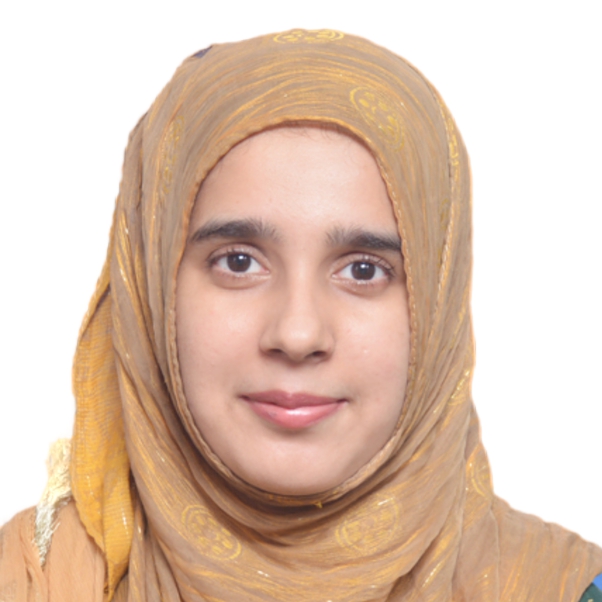
PhD Candidate: Rida Mazhar
About CeRDI
The Centre for eResearch and Digital Innovation (CeRDI) is a research centre at Federation University Australia focused on:
- the application of information and communications technology (ICT) and the development of innovative, world class knowledge management systems;
- significantly advancing the digital literacy and knowledge management capabilities of partner organisations;
- fostering partnerships for the development and implementation of eResearch with industry, government and academia; and
- measuring the impact of eResearch and digital innovation through longitudinal research.
Contact CeRDI
For further details about CeRDI’s diverse portfolio of research please visit our website: www.cerdi.edu.au, or contact Director, Associate Professor Helen Thompson: h.thompson@federation.edu.au
Mailing Address
Centre for eResearch and Digital Innovation
Federation University Australia
PO Box 691
Ballarat Vic 3353
Office Location
Suite 15, Greenhill Enterprise Centre
Ballarat Technology Park
University Drive
Mount Helen Vic 3350
Phone: +61 3 5327 9314
Email: support@cerdi.edu.au
Subscribe to the CeRDI Newsletter Mailing List
I would like to subscribe to the CeRDI Newsletter Mailing List to receive notifications of future CeRDI Newsletters.
If you have any feedback, please email newsletter@cerdi.edu.au




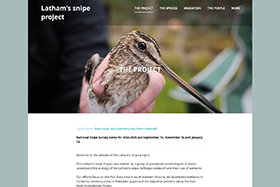
![]() is a not-for-profit science and community-based organisation dedicated to acquiring and managing land for conservation purposes. One of its properties, Silver Plains in central Tasmania, supports a significant highland population of Latham’s Snipe.
is a not-for-profit science and community-based organisation dedicated to acquiring and managing land for conservation purposes. One of its properties, Silver Plains in central Tasmania, supports a significant highland population of Latham’s Snipe.
![]() Data from over 5,500 sites, comprising 15,000 samples and 250,000 observations collected between 1988 and 2024, as well as 800 million soil probe observations.
Data from over 5,500 sites, comprising 15,000 samples and 250,000 observations collected between 1988 and 2024, as well as 800 million soil probe observations.![]() Contributions from project partners continue to grow, enhancing the depth and breadth of available data.
Contributions from project partners continue to grow, enhancing the depth and breadth of available data.![]() Public datasets have been updated with metadata, including descriptions, contact details, and licensing information.
Public datasets have been updated with metadata, including descriptions, contact details, and licensing information.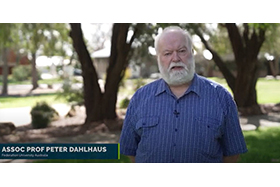
![]()

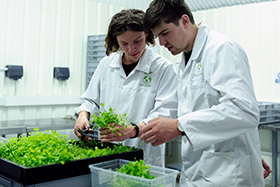


![]() Data Analysis and Pattern Recognition: Machine learning algorithms can sift through massive datasets to identify trends, correlations, and anomalies that might be missed by traditional methods.
Data Analysis and Pattern Recognition: Machine learning algorithms can sift through massive datasets to identify trends, correlations, and anomalies that might be missed by traditional methods.![]() Natural Language Processing (NLP): NLP tools help researchers extract insights from unstructured text, such as academic papers, survey responses, and historical documents.
Natural Language Processing (NLP): NLP tools help researchers extract insights from unstructured text, such as academic papers, survey responses, and historical documents.![]() Predictive Modelling: AI enables the creation of models that can forecast outcomes, simulate scenarios, and support hypothesis testing.
Predictive Modelling: AI enables the creation of models that can forecast outcomes, simulate scenarios, and support hypothesis testing.![]() Research Efficiency: Automated tools streamline tasks like data cleaning, coding, and visualisation, freeing up time for deeper inquiry and innovation.
Research Efficiency: Automated tools streamline tasks like data cleaning, coding, and visualisation, freeing up time for deeper inquiry and innovation.


![]()







